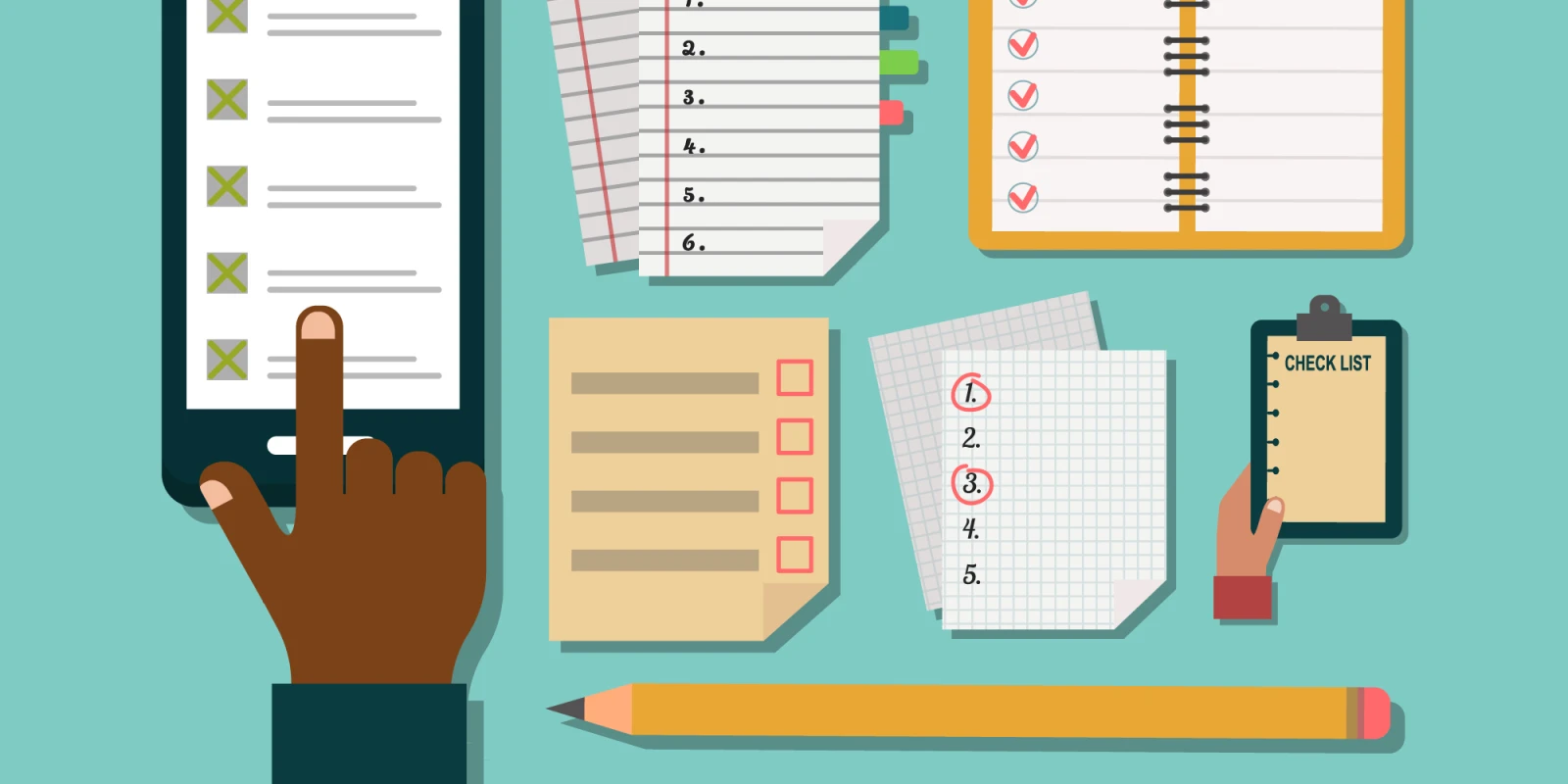
There is a science behind bullet journaling. Yes, it is an over-glorified way of making lists, but studies show that making lists leads to productivity. If making lists leads to my success and those lists are packaged in a cute little notebook (or not—see below), then I'm a believer.
Here is how the bullet journal can be your not-so-secret weapon to complete your mission—lofty plans to change the world and/or simple strategies to survive your personal and professional commitments. The bullet journal provides a space to write down and track your progress. You can customize it for your own level of artistic talent (mine is minimal) and tailor it to your needs.
The Zeigarnik Effect
The very exercise of writing down a to-do list actually relieves the brain from having to remember it all and frees up memory to move on to the next task. It's called the Zeigarnik effect, named after a psychologist Bluma Zeigarnik. She observed that waiters don't remember orders that have been served, and she went on to do experiments showing that people don't retain memory of completed tasks as much as incomplete tasks. Subsequent studies show that writing down incomplete tasks improved brainstorming and productivity.
Flexing the Working Memory
Ironically, other studies show that making lists, and structuring information into lists, reinforces working memory, and a strong working memory is essential for creativity and organization and for using past knowledge to make thoughtful decisions. Writing down a to-do list is a powerful strategy for kids and adults with attention deficit disorder, because even if they lose the list, the benefit to the brain from having written the list is sustained. Likewise, even if you don't look at your list for a day or a week, the benefit persists, and you are more likely to make better decisions that fit your goal. Writing down that you want to lower your carbohydrate intake could lead to your brain feeling less indulgence for desserts, for example. Writing down that you will send an update to your mentor could lead to your brain diverting the urge to tap into Instagram or any gaming app and open up a new email instead.
No. Period.
When you write down your tasks and goals, it's easier to say no to projects that don't align with your goals. Visualize your current commitments. Visualize your current schedule. Visualize self-care time. Family time. Friend time. Education time. Travel time. Visualize it in the bullet journal calendar. Do you still have room to schedule an extra meeting, an extra hustle, an extra event? If not, then say no. No explanation needed. Just say no and have more yes for moving forward and completing your current committments and goals.
How to Get Started With Bullet Journaling
The supplies: Whatever the actual mechanism details are, making to-do lists improves productivity. Bound up in a bundle of pages of minimal lists or elaborate decorations, here's how to get started with bullet journaling. All that's needed is a notebook. It can be lined, dotted, or blank. It can be large, medium, or small, depending on your preference and the size of your usual bag. The cost ranges anywhere from under $5 to over $30. Then you need a pen. Or pens. They can be black, or many colors, as long as they don't bleed into the otherside of the page. Highlighters are optional. Basic post-it flags can be used to tag important pages, and fun washi tape can be used to decorate or tag pages too. See how this really is a choose-our-adventure strategy, and we haven't even moved beyond choosing the physical products yet.
Organizing the Organizer: The bullet journal will help you stay organized, but first, there is a method to keeping the bullet journal itself organized.
- Symbols are important, so I put a symbol key on the back of the front cover in case I forget: a " ᐧ " dot next to each to do task, a small circle for an event, a "<" over a dot once the to do task has been scheduled, a ">" over the dot once the to-do task has been mitigated to another page or space, an "x" over the dot once the task is done, and finally, a "-" dash is assigned to notes.
- Number the pages. I just number 20 at a time in case I have to rip a page out later, and also it saves me time from having to take too long to get a journal started. Then, keep numbering as you get further along.
- Index. Takes up about 2 pages. This is where topics can be added here to help you find which page they are on faster. Topics can be added as you go along, such as monthly plans, vacations, project ideas, career development, and self care routine.
- Annual plan. This is a grid of 2-4 pages with all the months of the year. Jot down future to-do's or events and follow up tasks here.
- Current month. Set aside one page for each month. I list my month numbering the days down the lined page. Some people may prefer a more traditional monthly grid style. Work on one month at a time, so that the monthly plan stays close to the pages where you have your daily schedule.
- Current daily plan for the week. List our your to-dos and schedule on this section. Set aside 1/3 to 1 page for the day. I like to limit my day to 1/2 a page, because realistically, I am not never going to finish my list if I fill it with a whole page of tasks.
As the next week or month approaches, you can devote 1-2 pages for it. Never map it out too far ahead so that there is room for inspiration, mapping out ideas and goals, and jotting down notes at meetings or important events. The bullet journal system may take some time to sink in, but it's worth 1-2 days of practice. It's really as simple and flexible or as complicated and rigid as you make it. My bullet journal use is intermittent, so weeks can be absent from my pages, but no page is wasted because I can just pick up from where I left off. My notebook is full of black ink, coffee stains, and wrinkled pages that got wet. Other people have pages full of beautiful designs that burst with vivid colors.
Content: In addition to listing out tasks and events, the bullet journal also provides a space for tracking many other aspects of your personal and professional life. Take a blank page to brainstorm research project ideas, highlight the ones you want to pursue, and then refer back to it if you need inspiration or need to recall and explore a previously overlooked detail. Write down your goals and map out the actionable steps you can take to achieve them, and then review your progress every few months. Use the notebook to also practice mindfulness and self-care. Devote a few pages for gratitude where you can write down a short list of things you are grateful for, and at least one page on to list out what you do/plan to do for me time. Devote a few pages for habit tracking by making a graph of how often you spend time on healthy habits that make your brain more productive: drinking water, exercising, sleeping 7-8 hours a night, spending screen free time with family and friends. Other topics include: recipes, budgets, study log, car maintenance due dates, holiday gifts, meal planning, groceries...and achievements!
At the end of the day, your bullet journal is you. It's what you need and want it to be. Make a list of tasks. Schedule them. List-ify your mindfulness. Balance your busyness with calm. And don't underestimate the power of a bunch of lists packaged in a cute (or plain) little (or large) notebook. Look inside to boost your brain and unlock the strategy to your success.
Dr. Joannie Yeh is a pediatrician, bullet journal enthusiast and blogger at Betamomma.com. She is the cofounder of Girl Med Media, a non-profit supporting women in medicine through community and education. She is a 2018-2019 Doximity Author.







